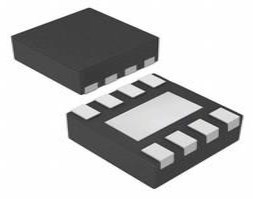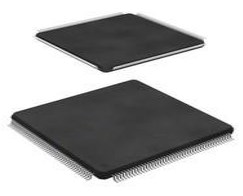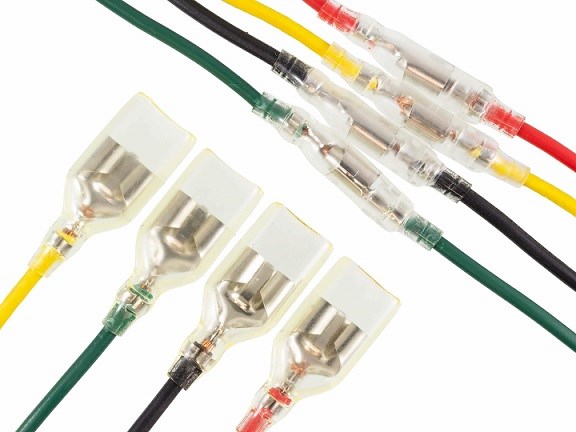Top Tips for Evaluating 74LVC1G02GW Component Suppliers
37.5mm mm Gates & Inverters 35mm mm
Learn how to evaluate 74LVC1G02GW suppliers by checking quality, certifications, customer reviews, and delivery reliability to ensure authentic components.
Product Introduction
Choosing the right supplier for the 74LVC1G02GW component is crucial. A poor choice can lead to counterfeit parts, delays, or unexpected costs. You need a systematic approach to avoid these risks. Reliable suppliers ensure quality and timely delivery, helping your projects succeed without unnecessary headaches.
Researching 74LVC1G02GW Suppliers
Identifying reputable suppliers in the electronics industry
Finding a trustworthy supplier for the 74LVC1G02GW component can feel overwhelming, but focusing on key criteria makes it easier. Look for suppliers that offer quality guarantees, thorough inspection processes, and secure payment methods. A solid refund policy is also a good sign. Here's a quick breakdown of what to check:
| Criteria | Details |
|---|---|
| Quality Guarantees | High-quality products guaranteed. |
| Inspection Processes | All goods are inspected before shipment to ensure they are in good condition. |
| Secure Payment Methods | Payments secured with SSL encryption and PCI DSS data protection protocols. |
| Refund Policy | Standard refund policy for orders that do not ship or arrive with issues. |
Suppliers offering these features are more likely to deliver reliable components and a smooth purchasing experience.
Checking certifications and compliance with industry standards
Certifications are a must when evaluating suppliers. They show that the supplier meets industry standards and follows proper procedures. Look for certifications like ISO 9001, which ensures quality management, or RoHS compliance, which confirms the components are environmentally friendly. These certifications give you peace of mind that the 74LVC1G02GW components you’re buying meet technical and safety requirements.
Reviewing customer feedback and testimonials
Customer reviews can tell you a lot about a supplier’s reliability. Pay attention to feedback on product quality, delivery speed, and customer service. For example, many customers praise suppliers who provide genuine parts, fast delivery, and excellent service. Here’s a snapshot of what to look for:
| Aspect | Customer Feedback |
|---|---|
| Product Quality | Original parts, very good condition, genuine parts. |
| Communication | Fast responses, courteous and professional interactions, transparent regarding process and price. |
| Delivery Speed | Fast delivery, timely delivery of goods, quick response time. |
| Customer Service | Excellent service, dedication to customer satisfaction, prompt replacement of defective goods. |
| Overall Experience | Highly recommended, great support, and effort appreciated by customers. |
Reading reviews helps you avoid unreliable suppliers and choose one that aligns with your needs.
Evaluating Supplier Quality for 74LVC1G02GW
Assessing quality control processes
When it comes to quality, you can’t afford to take chances. A reliable supplier should have robust quality control processes in place. These processes ensure that every 74LVC1G02GW component meets the required standards before it reaches you. Here are some key metrics to look for:
Components undergo stringent quality control checks.
All goods are inspected before shipment to confirm they match the datasheet and are in good condition.
By asking suppliers about their quality control practices, you can gauge their commitment to delivering high-quality components. Don’t hesitate to request documentation or certifications that back up their claims.
Requesting and testing sample components
Before committing to a bulk order, always request sample components. Testing these samples allows you to verify their performance and compatibility with your project. It’s a simple yet effective way to avoid costly mistakes.
When testing, focus on factors like functionality, durability, and compliance with technical specifications. If the samples perform well, it’s a good sign that the supplier can deliver consistent quality. This step also helps you build confidence in the supplier’s reliability.
Ensuring compliance with technical specifications
Suppliers must meet the technical specifications of the 74LVC1G02GW component. To verify this, review the product details they provide. Here’s an example of what to look for:
| Attribute | Details |
|---|---|
| Place of Origin | China |
| Brand Name | SIFTECH |
| Model Number | 74LVC1G02GW |
| Product Completion Type | Integrated circuit |
| Mounting Type | Standard |
| Quality | High-quality |
| Condition | Brand New and Original |
| Lead time | 1-3 working days |
This table highlights the essential attributes of a high-quality component. Cross-check these details with your project requirements to ensure compatibility. A supplier who provides clear and accurate information is more likely to be trustworthy.
Verifying 74LVC1G02GW Component Authenticity
Recognizing the risks of counterfeit components
Counterfeit components are a major concern in the electronics industry. They can lead to device failures, safety hazards, and wasted resources. When sourcing the 74LVC1G02GW component, you need to stay vigilant. Counterfeit parts often look identical to genuine ones, but they lack the quality and reliability you expect.
To avoid these risks, always choose suppliers with strong inspection processes. For example:
All goods should be inspected before shipment.
Products must match the datasheet specifications.
A warranty, such as a 365-day guarantee, adds an extra layer of security.
These measures ensure you receive authentic and reliable components for your projects.
Confirming authorized distributor status
Working with authorized distributors is one of the best ways to guarantee authenticity. Manufacturers like Nexperia maintain a network of trusted distributors worldwide. These distributors are equipped to provide genuine components and even offer samples for testing.
You can verify a distributor’s legitimacy by checking the manufacturer’s website. Nexperia, for instance, lists all its official distributors online. This simple step can save you from dealing with unauthorized sellers and counterfeit products.
Using traceability documentation for verification
Traceability documentation is another powerful tool for verifying authenticity. Reliable suppliers provide documents like datasheets, application notes, and quality reports. These documents confirm the component’s origin and specifications.
Here’s an example of what to look for:
| Document Type | Description | Date |
|---|---|---|
| Data Sheet | Detailed specifications for 74LVC1G02GW | 2024-09-02 |
| Application Note | Pin FMEA for LVC family | 2019-01-09 |
| Quality Document | Product reliability information | 2025-03-20 |
By reviewing these documents, you can confidently verify the authenticity of the components you’re purchasing.
Comparing Pricing and Payment Terms
Obtaining quotes from multiple suppliers
Getting quotes from several suppliers is a smart way to ensure you’re getting the best deal for the 74LVC1G02GW component. Suppliers often vary in pricing, and comparing their offers can help you spot competitive rates. Many customers have shared positive experiences when they reached out to multiple suppliers. For instance:
Some received fast responses and competitive quotes, even for parts not listed on the supplier’s website.
Others were able to negotiate lead times and secure better pricing options.
Good communication during the quoting process often led to more favorable deals.
By reaching out to multiple suppliers, you can also gauge their responsiveness and willingness to accommodate your needs. This step not only saves money but also builds confidence in your choice.
Balancing cost with quality considerations
While it’s tempting to go for the lowest price, you should always weigh cost against quality. A cheaper component might seem like a win, but if it doesn’t meet your project’s standards, it could cost you more in the long run. Look for suppliers who offer a balance between affordability and reliability. Testing sample components, as discussed earlier, can help you confirm that the quality matches the price. Remember, a slightly higher upfront cost for a dependable supplier often pays off with fewer issues down the line.
Reviewing payment terms and conditions
Payment terms can vary widely among suppliers, so it’s important to review them carefully. Favorable terms not only make transactions smoother but also reduce financial risks. Common payment methods include:
| Payment Method |
|---|
| Wire Transfer (T/T) |
| Western Union |
| Credit Card |
| PayPal |
Choose a supplier that offers secure and flexible payment options. For instance, PayPal and credit cards provide added buyer protection, while wire transfers are often preferred for larger transactions. Clear and fair payment terms show that the supplier values transparency and trust.
Assessing Delivery and Logistics
Evaluating delivery timelines and reliability
Delivery reliability matters when sourcing 74LVC1G02GW components. You need suppliers who stick to promised timelines and ensure your parts arrive when expected. Late deliveries can disrupt your project schedule and increase costs. Ask suppliers about their average lead times and how they handle unexpected delays.
Reliable suppliers often provide tracking information so you can monitor your shipment’s progress. Some even offer expedited shipping options for urgent orders. If a supplier consistently delivers on time, it’s a good sign they value your business and understand the importance of meeting deadlines.
Checking for flexible shipping and handling options
Flexibility in shipping and handling can make your purchasing experience smoother. Look for suppliers who offer multiple shipping methods, such as air freight, courier services, or local delivery. This allows you to choose the option that best fits your budget and timeline.
Some suppliers also provide custom handling services, like consolidating shipments or accommodating special packaging requests. These options can save you time and reduce the risk of errors during transit. When a supplier is willing to adapt to your needs, it shows they’re committed to providing excellent service.
Ensuring secure packaging to prevent damage
Packaging plays a big role in protecting components during transit. You don’t want your 74LVC1G02GW parts arriving damaged or unusable. Suppliers who prioritize secure packaging often use anti-static bags, bubble wrap, or reinforced boxes to safeguard delicate items.
Customers have praised suppliers like Allelco for their responsiveness and honesty. When defective goods were reported, Allelco promptly replaced them. However, feedback also highlighted the need for better packaging to prevent damage in the first place. This shows how secure packaging can directly impact customer satisfaction and product reliability.
A supplier who listens to feedback and improves their packaging practices demonstrates a commitment to quality. Always ask about their packaging methods before placing an order.
Building Long-Term Supplier Relationships
Establishing clear communication and expectations
Clear communication is the foundation of a strong supplier relationship. When you set clear expectations, your supplier knows exactly what you need, and misunderstandings are less likely to occur. This helps ensure smooth transactions and consistent quality.
Suppliers like Allelco have earned praise for their excellent communication. Customers often highlight their fast responses and willingness to address inquiries.
"I have had a great experience with Allelco. They are honest and consistently provide fast responses to my inquiries. Their service is excellent, and they truly care about their customers."
"Allelco has supported us very well. Many questions were asked and they responded quickly with cheerfulness and cooperation."
These examples show how clear communication can enhance supplier performance and build trust. When your supplier feels valued and informed, they’re more likely to go the extra mile for you.
Monitoring supplier performance over time
Building a long-term relationship doesn’t stop after the first order. You need to keep an eye on your supplier’s performance. Are they delivering on time? Are the components meeting your quality standards? Regularly reviewing these factors helps you identify any issues early and address them before they escalate.
You can also track how well they handle challenges. A supplier who resolves problems quickly and professionally shows they’re committed to maintaining a strong partnership. This ongoing evaluation ensures your supplier remains a reliable part of your supply chain.
Fostering trust through consistent collaboration
Trust grows when you and your supplier work together consistently. Regular communication, quick responses, and a willingness to adapt to your needs all contribute to a stronger bond.
Customers have praised Allelco for their honesty and fast responses, which foster trust.
Their dedication to customer satisfaction is evident in how they promptly replace defective goods and welcome suggestions for improvement.
Quick and cheerful responses to inquiries enhance appreciation and trust in the supplier.
When you collaborate closely with your supplier, you create a partnership that benefits both sides. They’ll feel motivated to support your goals, and you’ll gain a dependable ally for your projects.
Choosing the right supplier for the 74LVC1G02GW component doesn’t have to be overwhelming. By researching suppliers, verifying authenticity, and comparing pricing, you can make smarter decisions. Don’t forget to assess delivery reliability and build strong relationships. A little due diligence now ensures your projects run smoothly later.
FAQ
What should you prioritize when choosing a 74LVC1G02GW supplier?
Focus on quality control, authenticity, and delivery reliability. A trustworthy supplier ensures genuine components, meets deadlines, and provides excellent customer service.
How can you verify a supplier’s authenticity?
Check for certifications, authorized distributor status, and traceability documentation. These steps help confirm the supplier’s legitimacy and ensure you’re getting genuine components.
Why is testing sample components important?
Testing samples lets you verify performance and compatibility before committing to bulk orders. It minimizes risks and ensures the components meet your project’s requirements.
Specifications
- TypeParameter
- Surface Mount
having leads that are designed to be soldered on the side of a circuit board that the body of the component is mounted on.
YES - Material
In electronic components, the parameter "Material" refers to the substance or material used in the construction of the component. The choice of material is crucial as it directly impacts the component's performance, durability, and other characteristics. Different materials have varying properties such as conductivity, resistance to heat, corrosion resistance, and mechanical strength, which determine how the component functions in a circuit. Common materials used in electronic components include metals like copper and aluminum, semiconductors like silicon, insulators like ceramics and plastics, and various alloys. Selecting the appropriate material is essential for designing reliable and efficient electronic components.
aluminium - Number of Terminals5
- Rohs CodeYes
- Part Life Cycle CodeTransferred
- Ihs ManufacturerNXP SEMICONDUCTORS
- Part Package CodeTSSOT
- Package Description1.25 MM, PLASTIC, MO-203, SC-88A, SOT353-1, TSSOP-5
- Load Capacitance (CL)50 pF
- Operating Temperature-Max125 °C
- Operating Temperature-Min-40 °C
- Package Body MaterialPLASTIC/EPOXY
- Package CodeTSSOP
- Package Equivalence CodeTSSOP5/6,.08
- Package ShapeRECTANGULAR
- Package StyleSMALL OUTLINE, THIN PROFILE, SHRINK PITCH
- Supply Voltage-Nom (Vsup)1.8 V
- Type of heatsinkextruded
- Heatsink shapeT
- Colouraluminium
- Material finishingraw
- Mountingretaining spring
- Plate thickness8mm
- Gross weight700 g
- JESD-609 Code
The "JESD-609 Code" in electronic components refers to a standardized marking code that indicates the lead-free solder composition and finish of electronic components for compliance with environmental regulations.
e3 - Pbfree Code
The "Pbfree Code" parameter in electronic components refers to the code or marking used to indicate that the component is lead-free. Lead (Pb) is a toxic substance that has been widely used in electronic components for many years, but due to environmental concerns, there has been a shift towards lead-free alternatives. The Pbfree Code helps manufacturers and users easily identify components that do not contain lead, ensuring compliance with regulations and promoting environmentally friendly practices. It is important to pay attention to the Pbfree Code when selecting electronic components to ensure they meet the necessary requirements for lead-free applications.
Yes - ECCN Code
An ECCN (Export Control Classification Number) is an alphanumeric code used by the U.S. Bureau of Industry and Security to identify and categorize electronic components and other dual-use items that may require an export license based on their technical characteristics and potential for military use.
EAR99 - Terminal Finish
Terminal Finish refers to the surface treatment applied to the terminals or leads of electronic components to enhance their performance and longevity. It can improve solderability, corrosion resistance, and overall reliability of the connection in electronic assemblies. Common finishes include nickel, gold, and tin, each possessing distinct properties suitable for various applications. The choice of terminal finish can significantly impact the durability and effectiveness of electronic devices.
Tin (Sn) - HTS Code
HTS (Harmonized Tariff Schedule) codes are product classification codes between 8-1 digits. The first six digits are an HS code, and the countries of import assign the subsequent digits to provide additional classification. U.S. HTS codes are 1 digits and are administered by the U.S. International Trade Commission.
8542.39.00.01 - Terminal Position
In electronic components, the term "Terminal Position" refers to the physical location of the connection points on the component where external electrical connections can be made. These connection points, known as terminals, are typically used to attach wires, leads, or other components to the main body of the electronic component. The terminal position is important for ensuring proper connectivity and functionality of the component within a circuit. It is often specified in technical datasheets or component specifications to help designers and engineers understand how to properly integrate the component into their circuit designs.
DUAL - Terminal Form
Occurring at or forming the end of a series, succession, or the like; closing; concluding.
GULL WING - Peak Reflow Temperature (Cel)
Peak Reflow Temperature (Cel) is a parameter that specifies the maximum temperature at which an electronic component can be exposed during the reflow soldering process. Reflow soldering is a common method used to attach electronic components to a circuit board. The Peak Reflow Temperature is crucial because it ensures that the component is not damaged or degraded during the soldering process. Exceeding the specified Peak Reflow Temperature can lead to issues such as component failure, reduced performance, or even permanent damage to the component. It is important for manufacturers and assemblers to adhere to the recommended Peak Reflow Temperature to ensure the reliability and functionality of the electronic components.
260 - Number of Functions1
- Terminal Pitch
The center distance from one pole to the next.
0.65 mm - Reach Compliance Code
Reach Compliance Code refers to a designation indicating that electronic components meet the requirements set by the Registration, Evaluation, Authorization, and Restriction of Chemicals (REACH) regulation in the European Union. It signifies that the manufacturer has assessed and managed the chemical substances within the components to ensure safety and environmental protection. This code is vital for compliance with regulations aimed at minimizing risks associated with hazardous substances in electronic products.
compliant - Time@Peak Reflow Temperature-Max (s)
Time@Peak Reflow Temperature-Max (s) refers to the maximum duration that an electronic component can be exposed to the peak reflow temperature during the soldering process, which is crucial for ensuring reliable solder joint formation without damaging the component.
30 - Pin Count
a count of all of the component leads (or pins)
5 - JESD-30 Code
JESD-30 Code refers to a standardized descriptive designation system established by JEDEC for semiconductor-device packages. This system provides a systematic method for generating designators that convey essential information about the package's physical characteristics, such as size and shape, which aids in component identification and selection. By using JESD-30 codes, manufacturers and engineers can ensure consistency and clarity in the specification of semiconductor packages across various applications and industries.
R-PDSO-G5 - Qualification Status
An indicator of formal certification of qualifications.
Not Qualified - Supply Voltage-Max (Vsup)
The parameter "Supply Voltage-Max (Vsup)" in electronic components refers to the maximum voltage that can be safely applied to the component without causing damage. It is an important specification to consider when designing or using electronic circuits to ensure the component operates within its safe operating limits. Exceeding the maximum supply voltage can lead to overheating, component failure, or even permanent damage. It is crucial to adhere to the specified maximum supply voltage to ensure the reliable and safe operation of the electronic component.
5.5 V - Temperature Grade
Temperature grades represent a tire's resistance to heat and its ability to dissipate heat when tested under controlled laboratory test conditions.
AUTOMOTIVE - Supply Voltage-Min (Vsup)
The parameter "Supply Voltage-Min (Vsup)" in electronic components refers to the minimum voltage level required for the component to operate within its specified performance range. This parameter indicates the lowest voltage that can be safely applied to the component without risking damage or malfunction. It is crucial to ensure that the supply voltage provided to the component meets or exceeds this minimum value to ensure proper functionality and reliability. Failure to adhere to the specified minimum supply voltage may result in erratic behavior, reduced performance, or even permanent damage to the component.
1.65 V - Family
In electronic components, the parameter "Family" typically refers to a categorization or classification system used to group similar components together based on their characteristics, functions, or applications. This classification helps users easily identify and select components that meet their specific requirements. The "Family" parameter can include various subcategories such as resistors, capacitors, diodes, transistors, integrated circuits, and more. Understanding the "Family" of an electronic component can provide valuable information about its compatibility, performance specifications, and potential uses within a circuit or system. It is important to consider the "Family" parameter when designing or troubleshooting electronic circuits to ensure proper functionality and compatibility with other components.
LVC/LCX/Z - Number of Inputs2
- Seated Height-Max
Seated Height-Max in electronic components refers to the maximum height at which a component can be comfortably installed or operated when a user is seated. It is particularly relevant in designs involving ergonomic considerations, where the placement of controls, displays, or other interfaces must accommodate users in seated positions. This parameter ensures accessibility and usability, preventing strain or discomfort during operation.
1.1 mm - Logic IC Type
Logic IC Type refers to the type of integrated circuit (IC) that is specifically designed to perform logical operations. These ICs are commonly used in digital electronic devices to process and manipulate binary data according to predefined logic functions. The Logic IC Type parameter typically specifies the specific logic family or technology used in the IC, such as TTL (Transistor-Transistor Logic), CMOS (Complementary Metal-Oxide-Semiconductor), or ECL (Emitter-Coupled Logic). Understanding the Logic IC Type is important for selecting the appropriate IC for a given application, as different logic families have varying characteristics in terms of speed, power consumption, and noise immunity.
NOR GATE - Max I(ol)
Max I(ol) refers to the maximum output current that a specific electronic component, such as a transistor or integrated circuit, can sink or source. This parameter is crucial in determining the capability of the component to drive external loads without being damaged. It is typically specified in the component's datasheet and is important for ensuring proper operation and reliability of the circuit in which the component is used. Designers must ensure that the output current requirements of the circuit do not exceed the specified "Max I(ol)" value to prevent overloading and potential failure of the component.
0.024 A - Prop. Delay@Nom-Sup
The parameter "Prop. Delay@Nom-Sup" in electronic components refers to the propagation delay at nominal supply voltage. Propagation delay is the time it takes for a signal to travel from the input of a component to the output, typically measured in nanoseconds or picoseconds. The nominal supply voltage is the standard operating voltage specified for the component.This parameter is important because it affects the overall speed and performance of the electronic circuit. A shorter propagation delay means faster signal processing and better overall performance. Designers need to consider the propagation delay at the nominal supply voltage when selecting components for their circuits to ensure proper functionality and meet performance requirements.
6 ns - Propagation Delay (tpd)
Propagation delay (tpd) is a crucial parameter in electronic components, especially in digital circuits. It refers to the time taken for a signal to travel from the input of a component to its output. This delay is caused by various factors such as the internal circuitry, interconnections, and the physical properties of the component. Propagation delay is essential to consider in designing circuits to ensure proper timing and functionality. It is typically measured in nanoseconds or picoseconds and plays a significant role in determining the overall performance and speed of electronic systems.
10.5 ns - Schmitt Trigger
A Schmitt Trigger is a type of comparator circuit commonly used in electronics to convert an analog input signal into a digital output signal. It has hysteresis, which means that the output switches at different voltage levels depending on whether the input is rising or falling. This hysteresis helps to eliminate noise and provide a more stable output signal. Schmitt Triggers are often used in applications where noise immunity and signal conditioning are important, such as in signal processing, waveform shaping, and digital logic circuits.
NO - 2nd Connector Number of Positions Loadeduniversal
- Saturation Current
Saturation current is the maximum current that flows through a diode when it is in the forward-biased condition, and additional increases in voltage do not lead to significant increases in current. It represents the point where all available carriers have been used for conduction, and further increases in voltage only result in a minimal change in current. In transistors, saturation current refers to the collector current in a saturated state, where the transistor is fully ON and providing the maximum amplification of input signals. This parameter is crucial for understanding the behavior of semiconductor devices in various operating conditions.
1 - Length37.5mm
- Width30mm
- Height35mm
Datasheet PDF
- Datasheets :
 TPS22965DSGT Load Switch: Layout, Pinout, and Datasheet
TPS22965DSGT Load Switch: Layout, Pinout, and Datasheet28 March 20222112
 PIC16F886 Microcontroller: Circuit, Pinout, and Datasheet
PIC16F886 Microcontroller: Circuit, Pinout, and Datasheet25 October 202111155
![TLP521-2XGB Optocoupler: TLP521 Series, Datasheet, Pinout [FAQ]](https://res.utmel.com/Images/Article/03d1cf24-6a28-4952-9a58-b45ee6eedbf4.jpg) TLP521-2XGB Optocoupler: TLP521 Series, Datasheet, Pinout [FAQ]
TLP521-2XGB Optocoupler: TLP521 Series, Datasheet, Pinout [FAQ]06 January 20231280
 TPS2051BDBVR Power-Distribution Switch: Diagram, Pinout, and Datasheet
TPS2051BDBVR Power-Distribution Switch: Diagram, Pinout, and Datasheet01 April 20221651
 STM32H7 Arm® Cortex®-M7 MCUs: Features, Advantage and Datasheet
STM32H7 Arm® Cortex®-M7 MCUs: Features, Advantage and Datasheet07 January 20228163
 STM32H747XIH6 Microcontroller: Features, Applications and Datasheet
STM32H747XIH6 Microcontroller: Features, Applications and Datasheet26 December 20232398
![PIC18F4550 Microcontroller: PIC18F4550 Datasheet, Pinout and Programming [FAQ]](https://res.utmel.com/Images/Article/1c5c1198-af21-4e07-94b0-fa119d96ef6a.jpg) PIC18F4550 Microcontroller: PIC18F4550 Datasheet, Pinout and Programming [FAQ]
PIC18F4550 Microcontroller: PIC18F4550 Datasheet, Pinout and Programming [FAQ]10 December 202118187
 Detailed Features and Specifications of STM32F051C8T6
Detailed Features and Specifications of STM32F051C8T624 July 2025203
 What is an Electrical Connector?
What is an Electrical Connector?19 November 20256363
 Building a Smart Home System: Exploring Arduino Applications
Building a Smart Home System: Exploring Arduino Applications13 March 20242349
 Neural Processing Unit (NPU) Explained
Neural Processing Unit (NPU) Explained15 October 202556043
 Leading Fiber Optic Connectors Every Installer Should Know
Leading Fiber Optic Connectors Every Installer Should Know17 July 2025962
 Applications of FPGAs in Artificial Intelligence: A Comprehensive Guide
Applications of FPGAs in Artificial Intelligence: A Comprehensive Guide29 August 20251461
 Three-Phase WBG Resonant Converter Integrated with PCB Winding Transformer
Three-Phase WBG Resonant Converter Integrated with PCB Winding Transformer20 October 20232163
 The Through Hole of the PCB Circuit Board Must be Plugged, Why?
The Through Hole of the PCB Circuit Board Must be Plugged, Why?14 February 20233095
 Global Ceramic Capacitors Market In-Depth Analysis to 2024
Global Ceramic Capacitors Market In-Depth Analysis to 202424 November 20234236
NXP Semiconductors
In Stock: 59600
United States
China
Canada
Japan
Russia
Germany
United Kingdom
Singapore
Italy
Hong Kong(China)
Taiwan(China)
France
Korea
Mexico
Netherlands
Malaysia
Austria
Spain
Switzerland
Poland
Thailand
Vietnam
India
United Arab Emirates
Afghanistan
Åland Islands
Albania
Algeria
American Samoa
Andorra
Angola
Anguilla
Antigua & Barbuda
Argentina
Armenia
Aruba
Australia
Azerbaijan
Bahamas
Bahrain
Bangladesh
Barbados
Belarus
Belgium
Belize
Benin
Bermuda
Bhutan
Bolivia
Bonaire, Sint Eustatius and Saba
Bosnia & Herzegovina
Botswana
Brazil
British Indian Ocean Territory
British Virgin Islands
Brunei
Bulgaria
Burkina Faso
Burundi
Cabo Verde
Cambodia
Cameroon
Cayman Islands
Central African Republic
Chad
Chile
Christmas Island
Cocos (Keeling) Islands
Colombia
Comoros
Congo
Congo (DRC)
Cook Islands
Costa Rica
Côte d’Ivoire
Croatia
Cuba
Curaçao
Cyprus
Czechia
Denmark
Djibouti
Dominica
Dominican Republic
Ecuador
Egypt
El Salvador
Equatorial Guinea
Eritrea
Estonia
Eswatini
Ethiopia
Falkland Islands
Faroe Islands
Fiji
Finland
French Guiana
French Polynesia
Gabon
Gambia
Georgia
Ghana
Gibraltar
Greece
Greenland
Grenada
Guadeloupe
Guam
Guatemala
Guernsey
Guinea
Guinea-Bissau
Guyana
Haiti
Honduras
Hungary
Iceland
Indonesia
Iran
Iraq
Ireland
Isle of Man
Israel
Jamaica
Jersey
Jordan
Kazakhstan
Kenya
Kiribati
Kosovo
Kuwait
Kyrgyzstan
Laos
Latvia
Lebanon
Lesotho
Liberia
Libya
Liechtenstein
Lithuania
Luxembourg
Macao(China)
Madagascar
Malawi
Maldives
Mali
Malta
Marshall Islands
Martinique
Mauritania
Mauritius
Mayotte
Micronesia
Moldova
Monaco
Mongolia
Montenegro
Montserrat
Morocco
Mozambique
Myanmar
Namibia
Nauru
Nepal
New Caledonia
New Zealand
Nicaragua
Niger
Nigeria
Niue
Norfolk Island
North Korea
North Macedonia
Northern Mariana Islands
Norway
Oman
Pakistan
Palau
Palestinian Authority
Panama
Papua New Guinea
Paraguay
Peru
Philippines
Pitcairn Islands
Portugal
Puerto Rico
Qatar
Réunion
Romania
Rwanda
Samoa
San Marino
São Tomé & Príncipe
Saudi Arabia
Senegal
Serbia
Seychelles
Sierra Leone
Sint Maarten
Slovakia
Slovenia
Solomon Islands
Somalia
South Africa
South Sudan
Sri Lanka
St Helena, Ascension, Tristan da Cunha
St. Barthélemy
St. Kitts & Nevis
St. Lucia
St. Martin
St. Pierre & Miquelon
St. Vincent & Grenadines
Sudan
Suriname
Svalbard & Jan Mayen
Sweden
Syria
Tajikistan
Tanzania
Timor-Leste
Togo
Tokelau
Tonga
Trinidad & Tobago
Tunisia
Turkey
Turkmenistan
Turks & Caicos Islands
Tuvalu
U.S. Outlying Islands
U.S. Virgin Islands
Uganda
Ukraine
Uruguay
Uzbekistan
Vanuatu
Vatican City
Venezuela
Wallis & Futuna
Yemen
Zambia
Zimbabwe













